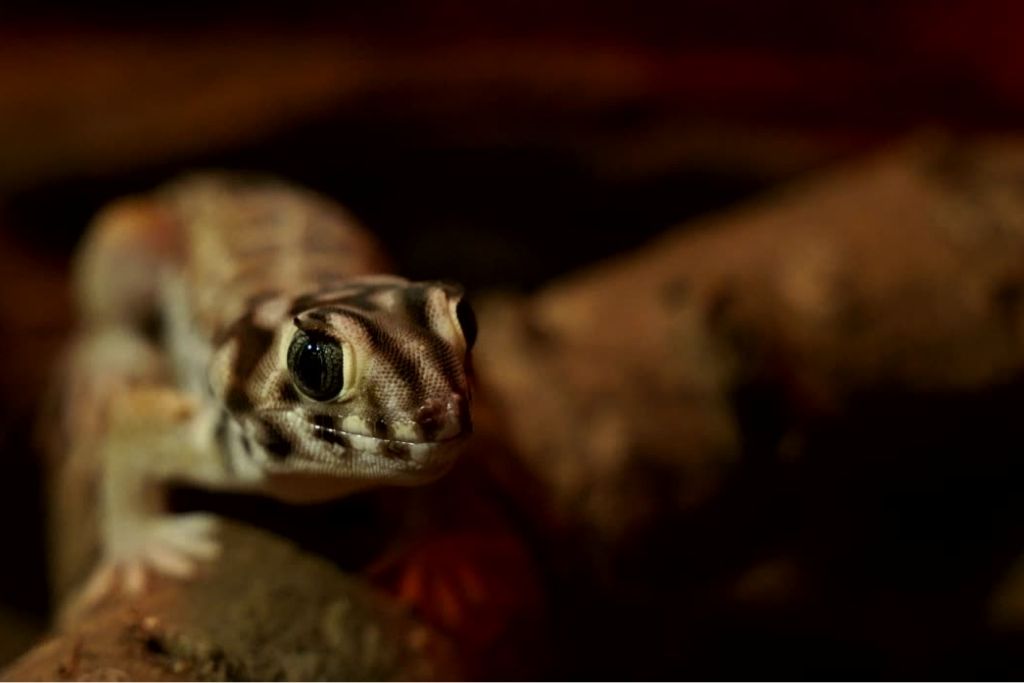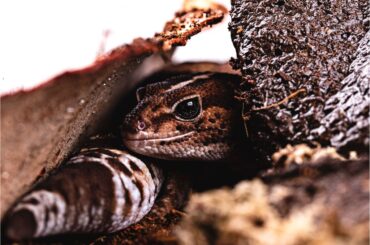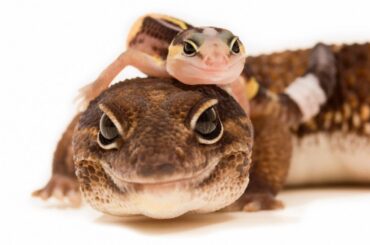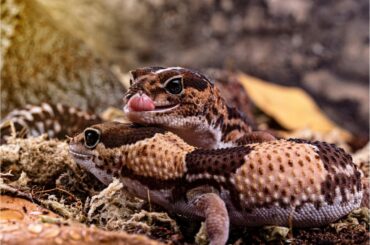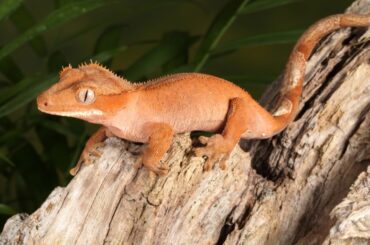Is your leopard gecko looking a bit chubby? Are you wondering if it’s a sign of good health or a reason to be concerned? Can you tell if a gecko is an obese leopard gecko just by looking?
A “fat leopard gecko” is more than just a chubby gecko little friend. Being overweight can lead to serious health issues for these creatures. Just like in humans, carrying extra weight can make your gecko feel sluggish and cause health problems, like joint pain.
Knowing how to spot the signs of an overweight gecko is super important. It can help you change their diet or lifestyle before it’s too late. Understanding these signs can help you take better care of your pet in general. Let’s dive in to learn more!
Leopard Gecko Body Condition
A healthy leopard gecko typically has a streamlined body that is not too thin or bulky. Their skin should be smooth, and their tail should look thick but proportional to the body. Visual aids like body condition charts can offer helpful comparisons. Look for those demonstrating the difference between a sleek, healthy gecko and an overweight one.
Maintaining a proper weight benefits the overall well-being of your leopard gecko. Weight impacts everything from their mobility to digestion. When your gecko stays within a healthy weight range, it’s more likely to live a long and happy life.
Identifying Signs of Overweight Leopard Gecko
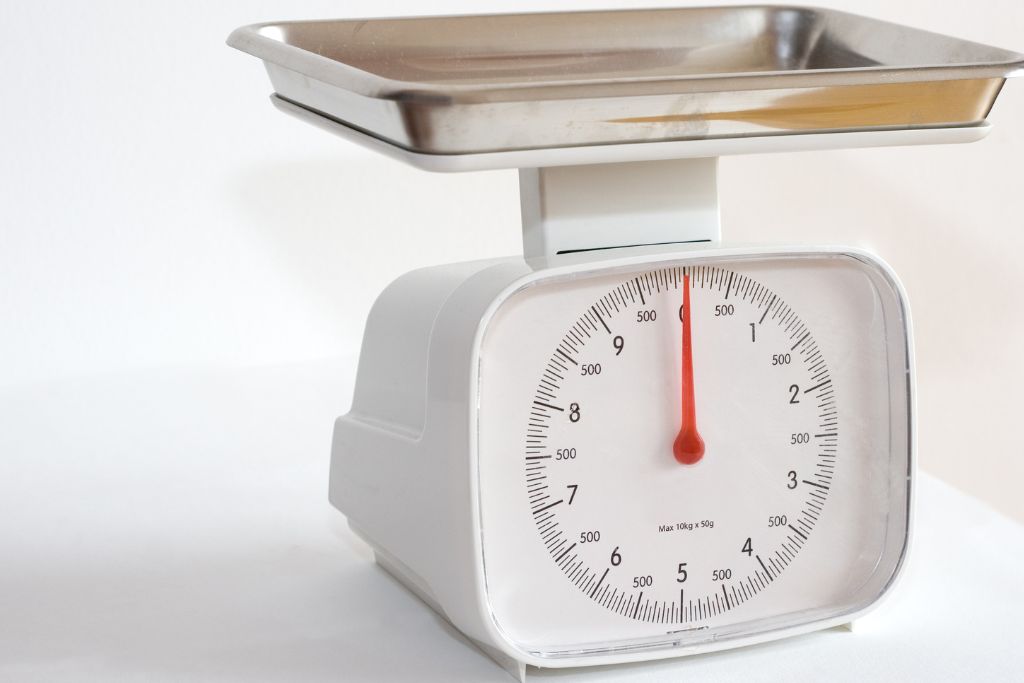
Before diving into specifics, let’s acknowledge that identifying an overweight leopard gecko requires careful observation.
Weight Gain and Body Shape
If you notice your leopard gecko looking more rounded than sleek, that could signal weight gain. Body shape serves as an early warning system.
Weigh your gecko regularly with a digital scale to track its weight over time. This allows you to catch any increases early and adjust its diet accordingly. Keeping records in a pet health journal can provide an effective way to track these weight changes.
Change in your gecko’s appearance isn’t just cosmetic; it’s a potential health concern. Overweight geckos may experience decreased mobility, making it harder for them to move around their enclosures. Hence, consistent weight tracking keeps your pet looking good and helps you anticipate any health-related issues.
Fat Pads and Tail
Ever notice some chubby areas around your leopard gecko’s armpits? Those are fat pads. If they start to look more prominent, that’s a sign of weight gain. The tail, another important indicator, will thicken and soften when storing excess fat. Unlike the sleek, firm tail, an overweight one will have a bloated tail.
A change in the tail’s appearance means you should reconsider your pet’s diet. Not only does an enlarged tail look different, but it can also make it difficult for the gecko to move quickly. Observing these changes early helps you make adjustments to your pet’s lifestyle that can lead to better health.
Decreased Activity Levels
An overweight gecko usually becomes less active. You might see fewer instances of climbing, less exploration, or even a reluctance to move. To keep tabs on activity levels, jot down notes on what you observe daily. Use these records for comparison over time to discern if there’s a decrease in regular activity.
The impact of low activity levels goes beyond just your gecko having less fun. A sedentary lifestyle can contribute to further weight gain, creating a vicious cycle. Therefore, noticing the early signs of decreased activity can help you intervene with exercise or diet changes before the problem worsens.
Impact on Health
Too much weight gain can trigger multiple health issues in your leopard gecko. You’re looking at potential problems ranging from joint issues to digestive complications. These issues don’t just make your gecko uncomfortable; they can also shorten its lifespan.
Preventing these health issues requires proactive weight management. Early intervention, such as diet adjustments and exercise, is critical. If your gecko shows severe symptoms, make lifestyle changes when you notice weight gain or reduced activity.
8 Factors Contributing to Overweight Leopard Geckos
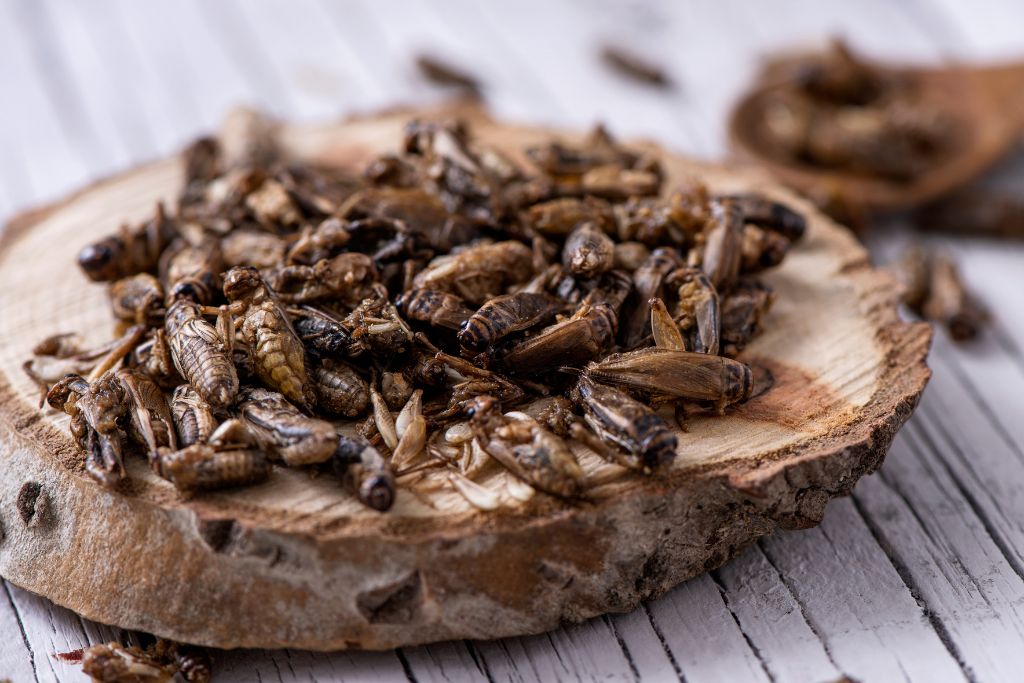
Why might your leopard gecko be gaining extra pounds? You’re not alone in asking this. Let’s dig into the factors that can make these little guys overweight.
- Excessive Feeding: Feeding your gecko too much or too often piles on the pounds. Owners sometimes offer ample portions, mistaking their pet’s willingness to eat as needing more food.
- High-Fat Diet: Some foods are richer in fats than others. Waxworms and mealworms, for example, contain higher fat levels. Consistent feeding of such high-fat items leads to weight gain.
- Lack of Exercise: An inactive lifestyle contributes to obesity. Geckos in small enclosures with fewer toys or climbing structures often have limited physical activity.
- Improper Temperature: Inadequate heat affects a gecko’s metabolism, making it slower to digest food. This can result in weight gain over time.
- Age: Older geckos are generally less active than their younger counterparts, leading to a gradual increase in weight as they age.
- Medical Conditions: Certain illnesses, like thyroid issues or hormonal imbalances, can cause unexpected weight gain.
- Human Error: Sometimes, well-meaning but misinformed owners can unknowingly contribute to their gecko’s weight problem by not knowing the signs of obesity or how to correctly measure food portions.
- Genetics: Just like in humans, genetics can play a role. Some geckos may be naturally predisposed to gain weight more quickly than others.
Preventing and Managing Overweight Leopard Geckos
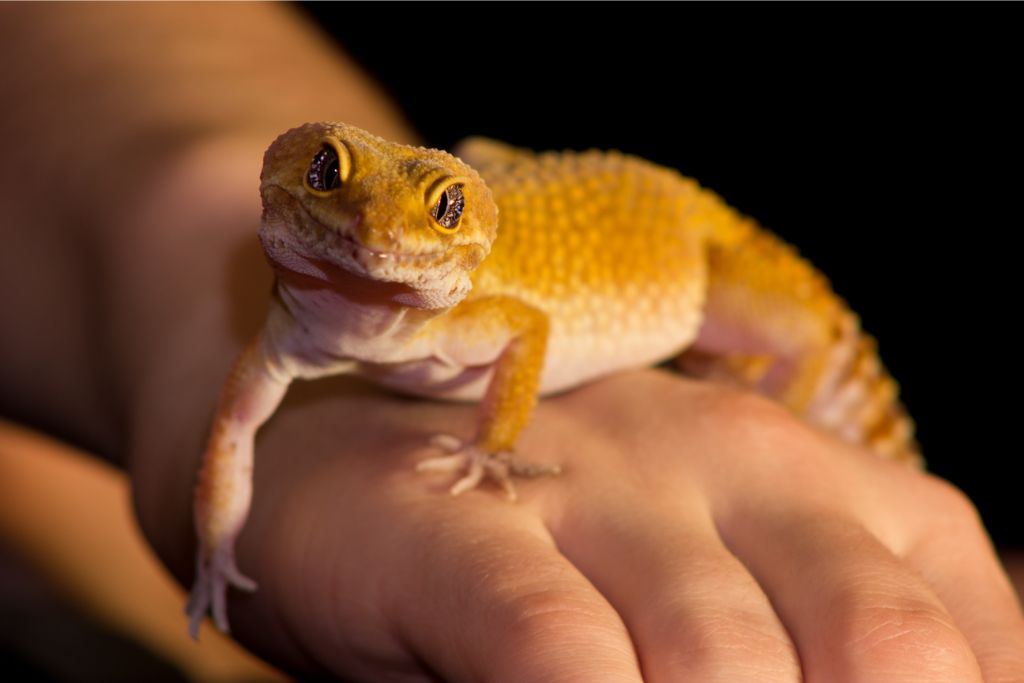
You’re in the right place if you’re worried about your leopard gecko packing on the extra grams. We’ll explore solid steps to prevent and manage overweight issues in these adorable pets.
Proper Nutrition
When it comes to diet, variety and balance reign supreme. Crickets, mealworms, and Dubia roaches offer good nutrition but should be dusted with a calcium and vitamin supplement. Remember that foods like waxworms are high in fat and should be given sparingly.
Portion control plays a crucial role in preventing overfeeding. A general rule is to offer insects smaller than the space between your gecko’s eyes and feed adults every other day.
Juveniles require daily feeding. Remove the excess if your gecko doesn’t eat everything you’ve offered within about 15 minutes to avoid overfeeding.
Encouraging Exercise
Stimulating physical activity in your gecko isn’t just fun; it’s essential. Add climbing structures, branches, and toys to encourage movement in their enclosure. Rotating these items can pique their curiosity, keeping them active as they explore their changing environment.
Another way to encourage exercise is to engage in “chase feeding,” where you make your gecko chase its food a little before eating. It mimics natural hunting behaviors and adds some much-needed exercise to their routine.
Consultation with a Vet
A vet specializing in reptiles can provide invaluable advice if you suspect your leopard gecko is overweight. They can conduct a thorough check-up, which may include weight and body measurements, to confirm whether there’s an issue.
Regular vet check-ups are also essential for weight management. The vet can track your pet’s weight over time, helping you to adjust diet and exercise plans as needed.
Don’t wait for your leopard gecko to show symptoms of obesity before seeking professional advice. Prevention is much easier than treatment.
Conclusion
Your leopard gecko depends on you for its well-being, and weight management is crucial. Simple measures like proper diet, adequate exercise, and regular vet visits can make a world of difference. So, take responsibility for your pet’s health. Your scaly friend will thank you uniquely.
FAQs
Is My Leopard Gecko Overweight?
It might be overweight if your gecko has an overly rounded body, thick tail, and visible fat pads.
What is the Fattest Leopard Gecko Ever?
Records vary, but some leopard geckos have weighed over 100 grams and are considered highly overweight.
What Does a Healthy Weight Leopard Gecko Look Like?
A healthy leopard gecko should have a well-proportioned body and a firm, plump tail without any fat pads showing around the armpits.

